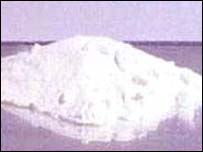More than one in seven (14%) young drivers aged 17-25 admit putting lives at risk by driving after taking illegal drugs, according to a survey of 1,150 young people by Brake, the national road safety charity.
Of those who admitted driving on drugs, one in ten said they did so after consuming alcohol as well – a particularly lethal combination. It is likely that even more young drivers drive on drugs, as some drivers surveyed are likely to have failed to admit their law-breaking.
Young people are not only putting their own lives at risk, but those of their young passengers and other road users. Nearly nine in ten of the young drug-drivers surveyed said they carry passengers when driving on drink or drugs.
A huge proportion of drivers killed on our roads are young – one in four car drivers who die behind the wheel are under 25, despite this age group accounting for just one in fifteen car licence-holders. Last year, road deaths overall fell by 8%, yet deaths among 16-19 year-old drivers and passengers rose by 12%.
The survey results come just days after a coroner branded drivers who have smoked cannabis as even more dangerous than drunk-drivers, while speaking at the inquest of a four year-old who was killed by a 19 year-old driver who had smoked cannabis. Isabella Hill died after Barnaby Pearce crashed into her grandfather’s car at nearly 80mph – he had smoked two joints earlier that day. The coroner pointed out that cannabis distorts a driver’s perception of speed and their ability to react.
A study carried out on behalf of the Government shows driving on illegal drugs has increased massively over past decades and is now endemic in our society – 18% of drivers who died behind the wheel 1996-2000 had illegal drugs in their system, compared to 3% during the period 1985-1988. The latest figures from the study are due to be released later this year.
Claire Brixey’s son, Ashley, was killed in October 2004 aged 20 while travelling as a passenger in his friend’s car. His friend had been drinking and taking drugs. Claire says: “Ashley had his whole life ahead of him and this was snatched away because his friend decided to get behind the wheel after drinking and taking drugs – a deliberate decision that put his own life and his passengers’ lives at risk. It’s difficult to put into words the pain that Ashley’s death has caused, but I hope that other young people will realise the devastation caused to my family by drugged driving, and make a decision never to do it themselves.”
Barbara Pearce was seriously injured in a head-on crash with a car driven by a young man who had alcohol, cocaine, cannabis and ecstasy in his system. The driver, 21, and his passenger, 25, were both killed. Barbara suffered full penetrative burns and fractured every bone from the pelvis down. Barbara says: “I used to be a professional teacher. Now I’m a professional hospital patient thanks to a drunk and drugged driver. I would urge anyone considering driving after drinking or taking drugs to think about the damage you could do to yourself or someone else in a crash – you might think it’s boring to stay sober, but imagine how boring it is never being able to walk or move about.”
Mary Williams OBE, chief executive of Brake, says: “It’s high time that young people were made to realise the horrific consequences of drink and drugged driving. Through our helpline, Brake frequently supports families whose loved ones have been killed suddenly and violently because a driver has decided to get behind the wheel on drink or drugs. It’s a disgrace that so many young people are taking these risks and an outrage that the Government does not do more to raise awareness among this age group and invest more in policing our roads.”
Source: www.brake.org.uk
